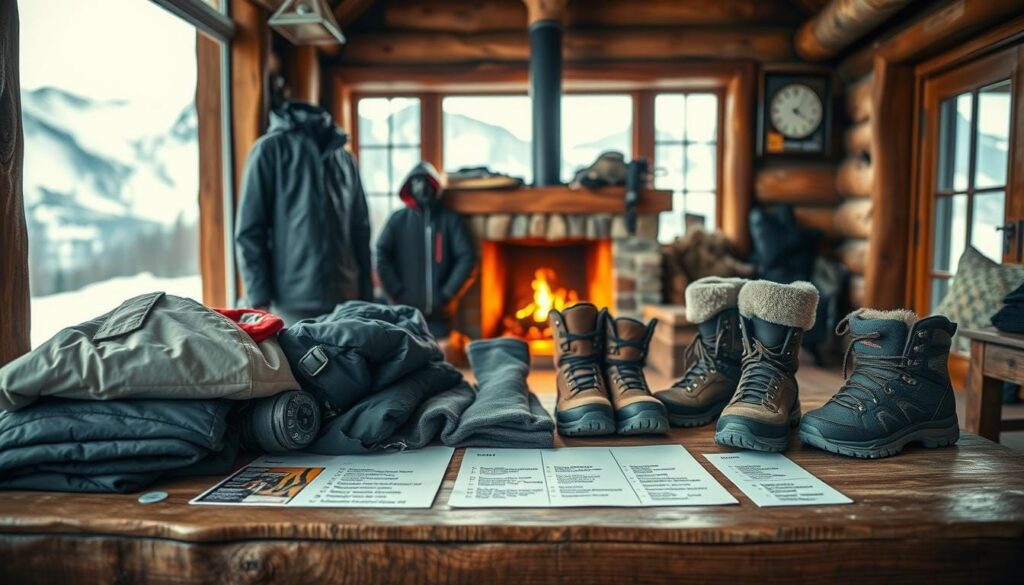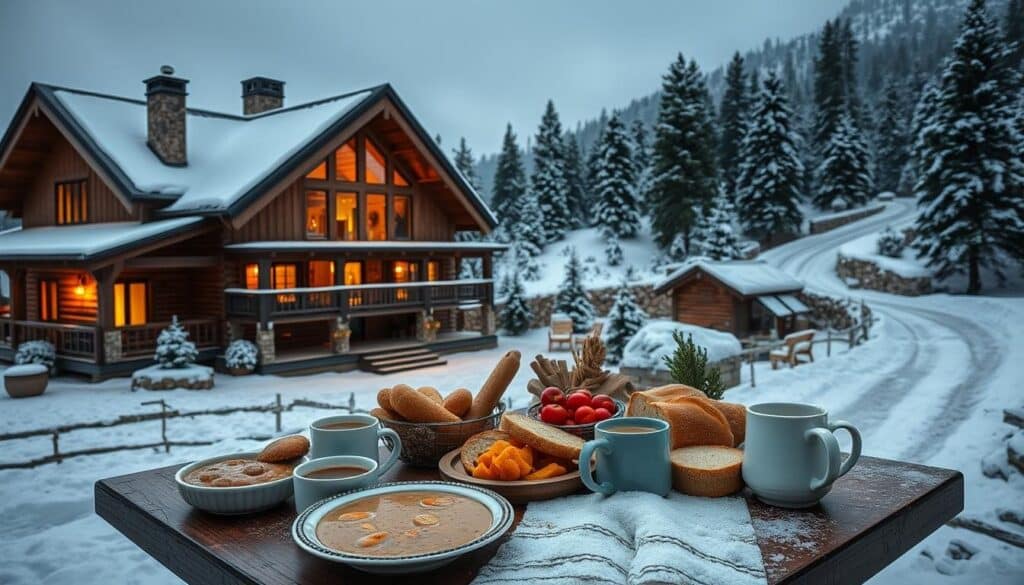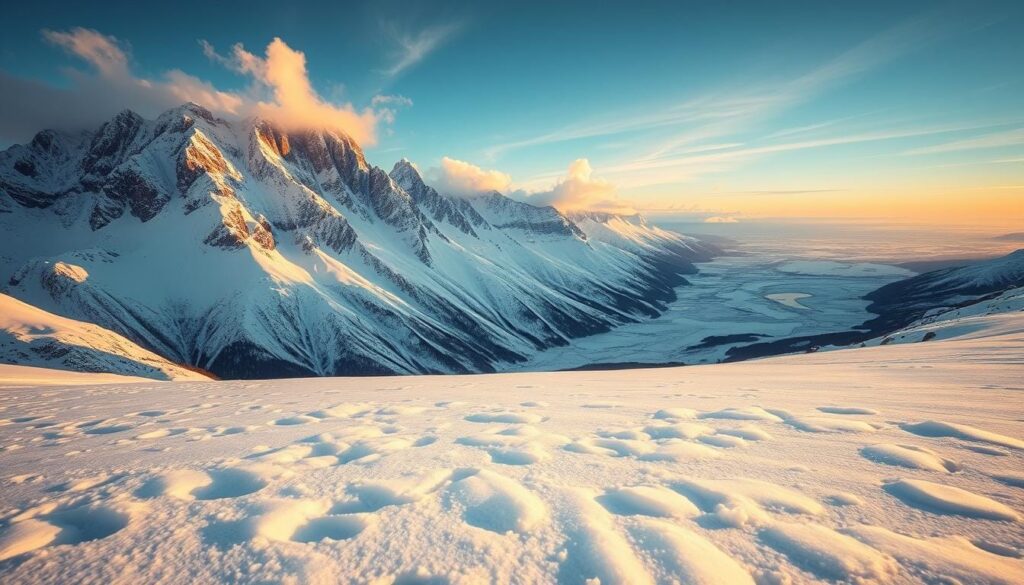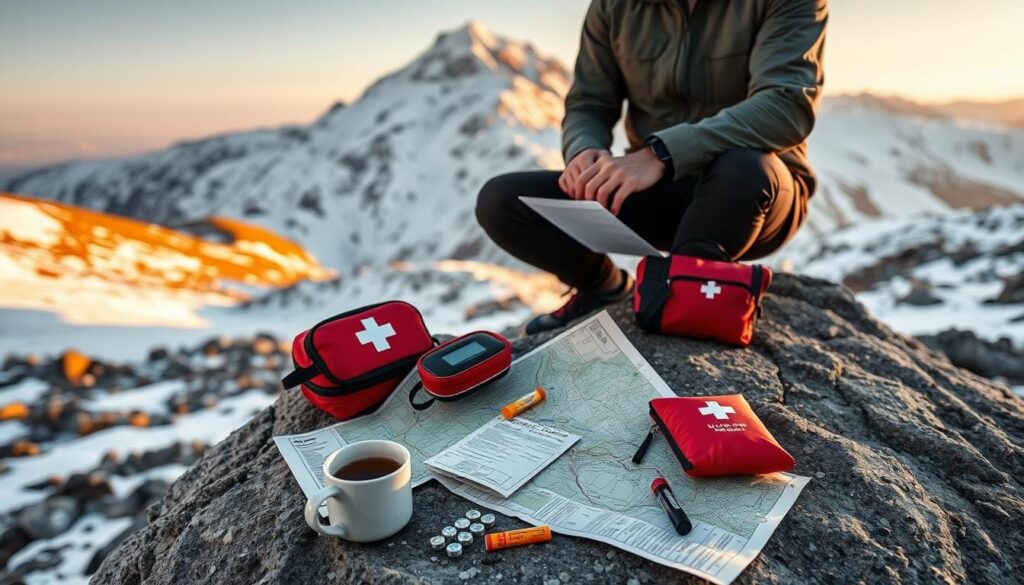Standing at the edge of a snow-covered valley is magical. The world feels quiet and fresh. Seeing snow on mountain peaks for the first time, I knew why people come back every year.
This guide will show you how to experience snow on the mountain. You’ll learn about exciting adventures and peaceful moments. It’s all about exploring, learning, and connecting with nature.
Looking for adventure or peace? This article will help you plan your trip. It covers choosing the right gear and respecting nature. For those interested in winter flowers, Chikus Garden’s guide shows you plants that grow in cold weather. Every piece of advice is designed to make your snowy dreams come true.
Key Takeaways
- Discover iconic destinations like the Rockies and Sierra Nevada.
- Learn to prepare for cold-weather adventures safely.
- Explore photography tips to capture winter’s beauty.
- Understand how to enjoy snow activities while protecting ecosystems.
- Plan trips around peak snowfall periods for optimal experiences.
Introduction to Snow-Capped Peaks
Snow-capped peaks are a big part of the American landscape. They create beautiful views and help keep ecosystems healthy. These mountains form from snow that falls and stays on them, making places like the Rocky Mountains and Sierra Nevada famous.
Learning about where these mountains come from and how they help nature makes us appreciate them more.
Overview of Snowy Mountains
Snowy mountains cover the U.S., each with its own special features. Here’s a quick look at some of the most notable ranges:
| Mountain Range | States | Notable Elevation |
|---|---|---|
| Rocky Mountains | Colorado, Wyoming | 14,440 ft (Pikes Peak) |
| Sierra Nevada | California | 14,505 ft (Mount Whitney) |
| Cascades | Washington, Oregon | 14,411 ft (Mount Rainier) |
Importance of Snow in Mountain Ecology
Snow is vital for mountain ecosystems in three main ways:
- Water Source: Melting snow feeds rivers and groundwater.
- Insulation: Keeps soil and roots safe during winter.
- Wildlife Habitat
“Snow isn’t just scenery—it’s life support for mountain regions.”
Healthy ecosystems need the right amount of snow. For example, keeping plants like fruit trees healthy is key. Learn how to care for plants at this resource. Taking care of these systems helps keep snow-capped mountains around for a long time.
Popular Mountain Ranges in the U.S.
The U.S. boasts some of the most iconic snow-covered mountains globally. Each range has its own unique landscapes and adventures. Whether you’re after rugged wilderness or family-friendly slopes, these spots are perfect for winter.
| Mountain Range | States | Notable Peaks | Key Features |
|---|---|---|---|
| Rocky Mountains | CO, WY, MT | Longs Peak, Grand Teton | Wildlife reserves, cross-country skiing trails |
| Sierra Nevada | CA | Mount Whitney, Lake Tahoe area | Ski resorts, ancient sequoia forests |
| Cascades | WA, OR | Mount Rainier, Mount Hood | Volcanic geology, backcountry routes |
Rocky Mountains
The Rockies stretch from New Mexico to Canada, home to ancient snow-capped mountain range ecosystems. Places like Rocky Mountain National Park and Yellowstone offer alpine hikes and wildlife viewing. The Continental Divide Trail leads to remote views.
Sierra Nevada
California’s Sierra Nevada range boasts Yosemite’s frozen waterfalls and Lake Tahoe’s top resorts. The John Muir Trail shows off granite cliffs with snow. Squaw Valley is great for skiers of all levels.
Cascades
Washington and Oregon’s Cascades are known for climbing Mount St. Helens and snowmobiling in North Cascades National Park. Crater Lake’s deep blue waters stand out against snow, making for stunning views.
Best Time to Experience Snow on the Mountain
Planning a winter adventure? Timing is key. The snowfall in the mountains changes by region and season. Use mountain snow forecast tools to plan your trip.
Winter Season Overview
Winter months offer unique chances:
| Month | Snowfall Patterns | Best Activities |
|---|---|---|
| December | Early powder | Skiing, snowmobiling |
| January | Peak accumulation | Backcountry exploration |
| February | Stable base | Snowshoeing, photography |
| March | Warmer days | Cross-country skiing |
Factors Affecting Snowfall
- Elevation: Higher peaks keep snow longer.
- Weather systems: Pacific storms hit the Rockies and Sierra Nevada.
- Climate trends: Warmer winters change snow patterns.
Follow mountain snow forecast updates with apps like OpenSnow or local ranger reports. Look out for terms like orographic lift in forecasts.
“Accurate forecasts mean the difference between fresh tracks and closed trails,” says NOAA meteorologists.
Snow Activities for Adventure Seekers
Winter’s white landscapes call to adventure seekers. Whether you’re carving down slopes or trekking through quiet trails, the snow on the mountain offers thrilling experiences. These activities turn winter wonderlands into playgrounds, from high-speed thrills to serene exploration.

Skiing and Snowboarding
Hit the slopes at places like Colorado’s Vail or California’s Mammoth Mountain. Downhill runs are for pros, while cross-country paths are perfect for beginners. Backcountry skiing requires advanced skills and knowledge of avalanches.
Rental shops offer boards, skis, and safety gear for all levels. This makes it easy to get started.
Snowshoeing
Explore untouched terrain with snowshoes. The Continental Divide Trail in the Rockies is a great place to wander. You’ll need sturdy boots and poles for this adventure.
Guided tours are perfect for first-timers. They provide maps and tips for the route.
Winter Hiking
Conquer snow peak hiking trails like Colorado’s Longs Peak or Washington’s Mount Rainier. Use crampons and ice axes for icy sections. Popular routes like New Hampshire’s Presidential Range offer stunning views.
But, always check the weather forecast. Group hikes increase safety in remote areas.
Family-Friendly Snow Activities
Turn snow covered mountains into a winter wonderland with fun activities for all ages. These adventures mix excitement with creativity, making memories in nature’s cold playground.
Sledding and Tubing
Experience the thrill of the slopes without needing to be an expert. Places like Breckenridge and Jackson Hole have gentle hills for beginners. They offer rentals and help, making it easy to enjoy:
| Location | Features | Rentals |
|---|---|---|
| Lake Tahoe | Gentle slopes, night lighting | Yes |
| Steamboat Springs | Beginner trails, gear shops | Available |
Snowman Building
Make more than just snowballs. Use sticks, scarves, and creative tips for unique touches. At places like Aspen Mountain, competitions reward the most creative snowmen.
Winter Festivals
Mountain towns come alive with magical events. Telluride’s Ice Festival showcases sculptures, while Steamboat’s Howlin’ Winter Carnival has torchlight parades. These festivals light up the snowy peaks with music and local crafts.
Preparation for Your Mountain Adventure
Before you hit the mountain, getting ready is key for safety and fun. Check the snow conditions and trail reports. Look into the weather and how it changes with elevation. Here are the essentials and tips to make your trip great.

Packing Essentials
Sort your gear by how long you’ll be out and the terrain. Use the table below for a quick guide:
| Category | Items |
|---|---|
| Clothing | Layered thermal wear, waterproof boots, gloves |
| Tools | Portable charger, map, compass |
| Emergency | Whistle, emergency blanket, high-energy snacks |
- Don’t forget sun protection: UV-blocking goggles and SPF 50+ sunscreen
- Bring a lightweight first-aid kit
Safety Gear Recommendations
Avalanche safety gear is critical in slide-prone areas. Include a beacon, probe, and shovel. Always check battery levels before you go. Carry a fully charged satellite messenger for far-off places.
“Never underestimate the power of snow on the mountain—prepare for sudden weather shifts.”
For driving, keep an ice scraper, tire chains, and a winter survival kit in your car. Make sure you can rent gear at your destination to avoid overpacking.
Choosing the Right Gear
Getting ready for winter adventures means having the right gear. Whether you’re exploring snowfall in the mountains or hiking snow peak hiking trails, the right equipment is key. It keeps you safe and comfortable. Start with a moisture-wicking base layer, then add insulating mid-layers, and finish with a waterproof outer shell.
Ski and Snowboard Equipment
- Skis/Snowboards: Pick all-mountain skis for different terrains or powder boards for deep snow. Burton and Black Diamond have models for all skill levels.
- Boots: Look for a snug fit with adjustable liners. Check how flexible they are for alpine touring or freestyle.
- Bindings: Make sure the DIN settings match your weight and skill. Rental shops have guides for beginners.
Layering for Cold Weather
Layering helps adjust to activity levels and snowfall in the mountains conditions:
- Base Layer: Use Merino wool or synthetic fabrics like Patagonia’s Capilene to keep skin dry.
- Mid Layer: Fleece or down jackets provide warmth without being too bulky.
- Outer Layer: Gore-Tex shells keep wind and moisture out on snow peak hiking trails.
“Proper gear transforms survival into adventure.” – Alpine Guides Association
For snow peak hiking trails, add traction devices like Kahtoola Microspikes. Keep your gear in waterproof bags. Consider renting expensive items like backcountry avalanche gear. Choose breathable materials to avoid overheating while active.
Accommodations Near Snowy Mountains
Planning your stay near snow-capped peaks starts with choosing the right lodging. You can find cozy cabins or modern resorts. These options meet every traveler’s needs, from luxury to affordability.
Ski Resorts
Luxury snow mountain resorts like Vail and Jackson Hole offer ski-in/ski-out access. They have heated pools and gourmet dining. For those on a budget, day-use facilities provide gear rentals and apres-ski events without overnight stays. Book early—peak season reservations fill fast.
- Luxury Resorts: Full-service amenities, premium access
- Affordable Options: Day passes, shared facilities
- Signature perks: Hot tubs, guided tours, equipment rentals
Cabin Rentals
Rent a rustic cabin near snow-capped peaks through VRBO or Airbnb. Look for fireplaces, Wi-Fi, and ski lift or trail access. Public Forest Service cabins offer budget options in remote areas. Check seasonal availability—many open only in winter.
Campsites
Winter camping enthusiasts can stay in heated yurts at Rocky Mountain National Park. Or rent winter-accessible campsites with fire pits. Backcountry camping requires permits and avalanche safety gear. Most sites charge $20–$50/night.
| Accommodation Type | Price Range | Key Features |
|---|---|---|
| Snow Mountain Resorts | $150–$500+/night | Full amenities, ski access, guided tours |
| Cabin Rentals | $100–$300/night | Private spaces, kitchen access, scenic views |
| Campsites | $20–$50/night | Outdoor adventures, budget-friendly, seasonal |
Transportation tips: Rent four-wheel-drive vehicles for remote cabin or campsite access. Many snow mountain resorts offer shuttle services to trailheads.
Transportation to Snowy Destinations
Traveling to snow covered mountains needs careful planning. You must check mountain snow conditions and transport options. Safe travel depends on preparation and knowing what to expect.
Driving Conditions and Tips
Roads near snow covered mountains can be closed or delayed. Here are some tips to stay safe:
- Install winter tires or carry tire chains for icy surfaces.
- Check state DOT websites for real-time mountain snow conditions and road closures.
- Pack emergency kits with blankets, water, and a fully charged phone.
“Over 60% of winter accidents occur on unplowed mountain roads. Plan routes using state highway alerts.”
Public Transportation Options
There are other ways to get to the mountains without driving:
| Option | Details | Best For |
|---|---|---|
| Shuttle Services | Services like Alpine Shuttle link airports to resorts year-round. | Families and groups avoiding parking hassles |
| Resort Shuttles | Free or discounted shuttles for guests at locations like Vail and Jackson Hole. | Accommodation guests |
| Amtrak Trains | Winter routes to Tahoe and Colorado Rockies with scenic mountain views. | Travelers avoiding icy roads |
Check schedules early. Many offer discounts during off-peak times.
Plan for extra time due to weather. Avoid booking last-minute during holidays. Eco-friendly travelers can share rides to reduce carbon footprint.
Local Cuisine to Enjoy in Mountain Areas
Winter wonderland escapes are filled with flavors that warm the soul. Snow mountain resorts offer dishes made with local ingredients and hearty comfort foods. From fondue pots at ski lodges to wood-fired stews in cozy cabins, mountain dining fuels adventures and celebrates local tastes.

“A perfect meal in the mountains should taste like it belongs in the snow,” says Chef Luca of Vail’s Alpine Hearth. “That’s why we use local game and fresh herbs.”
Famous Mountain Dishes
- Rocky Mountains: Bison chili with cornbread at Steamboat Springs’ Chuckwagon Grill
- Sierra Nevada: Squaw Valley clam chowder in sourdough bowls
- Appalachians: Coal-miner stew with buttermilk biscuits at Gatlinburg’s Smoky Mountain Lodge
Recommended Restaurants
| Restaurant | Location | Specialty |
|---|---|---|
| Timberline Tavern | Aspen, CO | Truffle-infused fondue with local mushrooms |
| Snowflake Bistro | Tahoe City, CA | Maple-glazed salmon with wild rice |
| Peak Café | Beaver Creek, CO | Three-cheese raclette with herb potatoes |
Many snow mountain resorts now offer gluten-free and vegan options, like Squaw Valley’s quinoa-stuffed peppers. Enjoy meals with spiced apple cider or craft beers from nearby microbreweries. For apres-ski bites, try fondue boards or chili stations at slope-side eateries.
Environmental Impact of Snow Activities
Exploring snow-capped mountain ranges is an unforgettable adventure. But, these environments need careful care. Mountain snow conditions shape fragile ecosystems, making sustainable practices key to preserve these landscapes.
“Every step we take can protect these peaks for generations.” – Mountain Conservation Alliance
Responsible Tourism Practices
Here are some habits to minimize harm:
- Dispose of trash properly to avoid disrupting wildlife habitats.
- Stick to marked trails to prevent erosion of sensitive mountain snow conditions.
- Support operators certified by groups like the Sustainable Snow Alliance.
- Avoid feeding wildlife and keep noise levels low in wintering areas.
Protecting Natural Habitats
Climate change and development threaten snow-capped mountain ranges. Visitors can help by:
- Choosing eco-certified lodging to reduce energy use.
- Offsetting travel emissions through carbon-reduction programs.
- Joining clean-up events organized by local conservation groups.
Small actions, like packing reusable gear, make a big difference. When millions visit these areas yearly, protecting mountain snow conditions ensures these ecosystems thrive for future explorers.
Photography Tips for Capturing Snowy Landscapes

Best Times for Photography
Golden hour is perfect for snow covered mountains with its soft light. Alpenglow adds warm colors to peaks at dawn or dusk. Keep an eye on weather apps for the best times—light snow adds texture to snow on the mountain. Here are some tips:
- Shoot 30 minutes after sunrise or before sunset for golden hour magic
- Capture alpenglow 15-20 minutes before sunrise for dramatic skies
- Position subjects against open snowfields to highlight contrast
Equipment Recommendations
Keep your gear dry and warm. Use hand warmers in battery cases to keep them alive. Polarizing filters cut down glare on snow, and wide-angle lenses show off snow covered mountains. Smartphone users, turn on HDR mode to balance light and dark.
- Wrap lenses in microfiber cloths to prevent condensation
- Carry extra batteries in an inside pocket
- Use remote shutters to avoid camera shake in cold
Use Lightroom to make your photos pop. Remember to follow park rules to protect the environment. These tips will help you capture the beauty of your snowy adventures.
Cultural Significance of Mountains in Winter
Winter’s snow-capped peaks have deep cultural meaning for communities in North America. They shape stories and identities. Learning about their heritage makes us appreciate these natural wonders more.
Indigenous Perspectives
For Indigenous peoples, mountains are sacred. The Paiute and Dakota nations see mountains as living ancestors. They hold winter ceremonies to honor the seasons and animal migrations.
These ceremonies are tied to snowfall and animal migrations. Traditional knowledge includes ice fishing techniques passed down for generations.
- Navajo creation stories link mountain ranges to spiritual balance.
- Sioux oral histories describe winter migrations as part of tribal lifeways.
Historical Uses of Snowy Peaks
Early explorers like John Colter used snow-capped mountains as paths to the West. Later, miners searched for riches in quiet valleys. Today, these landscapes inspire winter sports and eco-tourism.
“The snow holds the stories of our ancestors,” shared a Nez Perce elder in a 2022 environmental documentary. “Protecting these peaks is protecting our history.”
Modern expressions include Inuit throat singing referencing glacial formations. Films like Frozen Rivers (2021) show mountain winters through Indigenous eyes. By honoring these stories, visitors can respect both nature and culture.
Maintaining Health While Adventuring
Staying healthy on mountain adventures is key to safety and fun. Always check the mountain snow forecast and mountain snow conditions before you go. Drinking enough water and knowing how to handle high altitudes are essential.

Staying Hydrated in Cold Weather
Cold air makes dehydration worse. Even if you’re not sweating, drink water often. Use insulated bottles to keep your drinks warm. Electrolyte supplements can help replace lost salts.
- Carry 2–3 liters of water daily
- Avoid caffeine/alcohol which dehydrate
- Check mountain snow conditions for wind chill advisories
Recognizing Altitude Sickness
Altitude sickness happens when your body can’t adjust to thin air. Look out for headaches, nausea, or dizziness. If you start feeling these symptoms, act fast.
| Symptom | Action |
|---|---|
| Mild headache | Pause activity and hydrate |
| Nausea/dizziness | Descend 500+ feet immediately |
| Shortness of breath | Seek medical help |
“Acclimatization reduces altitude risks. Spend 24 hours at 8,000–10,000 feet before higher climbs.” – American Alpine Club
Always check the mountain snow forecast to plan your acclimatization days. Wear layers to stay warm and use sunscreen to protect against UV rays from snow. Keeping health first makes every adventure safe and memorable.
The Future of Snow on the Mountain
Climate changes and new tech are changing our winter views. Scientists say warmer temps might change mountain snow, affecting fun and nature. mountain snow forecast models show shorter snow times in places like the Rockies and Sierra Nevada.
“Snowpack declines threaten water supplies for 1 in 4 people globally,” says a U.S. Department of Energy study.
Climate Change and Its Effects
Warmer winters mean less snow, making snow peak hiking trails harder to reach. By 2046, southern U.S. mountains might see 30% less snow. Places that rely on snowmelt for water could face big shortages.
New mountain snow forecast tools help track these changes. Sites like U.S. Department of Energy offer up-to-date info.
Innovations in Snow Sports
There are new ways to keep winter sports alive:
- Artificial snowmaking tech extends snow peak hiking trails seasons
- Biodegradable gear cuts down on environmental harm
- Mobile apps link mountain snow forecast updates to trail conditions
| Challenge | Solution |
|---|---|
| Shorter snow seasons | Sustainable snowmaking |
| Trail erosion | Eco-friendly trail maintenance |
| Water scarcity | Smart irrigation systems |
Visitors can join citizen science projects to track snow levels. This helps conservation. It’s about finding a balance between fun and caring for nature.
Conclusion: Embracing the Snow-Capped Experience
Snow on the mountain turns landscapes into peaceful wonders, calling for exploration and respect. This journey through winter shows how it enriches our lives. From skiing in the Rockies to making snowmen, these moments are precious.
When planning your next trip, check the mountain snow forecast. It ensures safety and makes your experience better.
Reflecting on Your Adventure
Winter’s icy views offer more than just beauty; they build resilience and wonder. Whether you’re carving trails or enjoying local food, each moment strengthens your connection with nature. These experiences change how you see winter’s challenges and beauty.
The cold air, the sound of fresh snow, and the quiet of untouched slopes create lasting memories. These moments stay with you long after the trip is over.
Encouraging Sustainable Practices
Protecting these places starts with small choices. Wear layers to stay warm without wasting resources. Follow leave-no-trace principles and choose eco-certified lodgings. Checking the mountain snow forecast helps avoid overcrowding these delicate areas.
Every choice, from what gear you use to how you dispose of waste, impacts these peaks for future explorers. Let’s make every visit a step toward preserving their beauty.
Embrace the wild, but do it wisely. With knowledge of snow conditions and a commitment to preservation, every visit becomes a step toward preserving their beauty. Your next adventure is waiting—plan carefully, explore responsibly, and let the snow’s silence remind you why these places are special.

